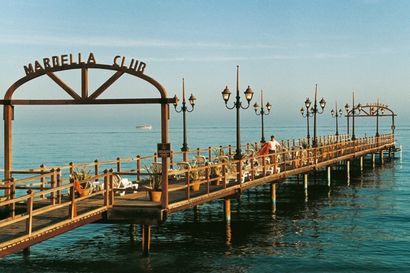There’s a man walking around Le Sirenuse with a paintbrush and a pot of white emulsion. Sit long enough by the pool and you’ll see him twice. Every six hours — come rain or shine, hell or high water, influencer or honeymooner— this quiet, dedicated figure completes a somber, pensive lap of the world’s loveliest hotel. He is looking for nicks, in the parlance of his trade — scuffs, marks, blemishes, smudges; the hourly wear and tear that dropped Persols and posing girlfriends might bring about. (And he carries a portable ‘Wet Paint’ sign with him wherever he goes, in elegant serif font, lest someone gets litigious over a Missoni kaftan.) There is a Zen-like calm to it all — like one of those Buddhist monks who spends an entire day crafting an intricate, perfectly symmetrical floor sculpture made of sand, only to watch the evening winds blow it all gently away. The task is never done — a painty Sisyphus rolling his boulder constantly up the hill. (Only the hills here are far lovelier, and hum and whine with grandmothers on Vespas who really wouldn’t think twice about laming an errant Californian.) This vigil tells you all you need to know about Le Sirenuse — an institution which remains improbably pure and sweetly caring, while the rest of the world grows murkier and more disinterested by the fortnight. “Nearly always when you find a place as beautiful as Positano, your impulse is to conceal it,” wrote John Steinbeck, whose words are unavoidable in these parts, like Kafka in Prague. It’s 68 years since the writer first visited the town, and 70 years since Le Sirenuse originally became a hotel. And the impulse on such an anniversary is simply to shut the hell up before it’s too late.


The word, however, is out. You’ll have seen Le Sirenuse on Instagram because it is more photogenic than God. Its handsome form cascades down over the cluttered hillside of Positano in shapes of piercing white, overripe terracotta and flashes of a very specific turquoise that only seems to exist down here, and there is a sense that all the other buildings in town have aimed at this look and missed. The hotel itself was just a single house when it first opened in 1951. But in the decades since, the neighbouring buildings have been happily subsumed into the body of Le Sirenuse, which means everything has a pleasingly warrenous feel, and you’re never sure, in some tipsy way, of what floor you’re on at any given time. (The lobby, by way of illustration, is on floor four of six. I think.)
In the early 1950s, the palazzo was the summer retreat of the aristocratic Sersale family from Naples, and Positano itself was little more than a fishing village, barely reachable by the switchback mountain roads that the Nazis missed. Marchese Paolo Sersale became mayor of the town in 1944, aged 25, and Steinbeck remembers him as “an archaeologist, a philosopher and an administrator,” who “dresses in tired slacks, a sweater and sandals” and “holds court anywhere he is.” Soon, Paolo decided to throw open the doors of the family pile to the elegant grand tourers of the era and a few returning Americans from the War, who came to show their sweethearts the little idyll they’d found among the horror. (One taxi driver told us, with quiet authority, that this probably accounts for the enduring American presence in the town. Two important but unrelated facts about our impromptu guide: he drinks 12 espressos a day, and just the week before had driven Kendall Jenner around but didn’t know who she was.)
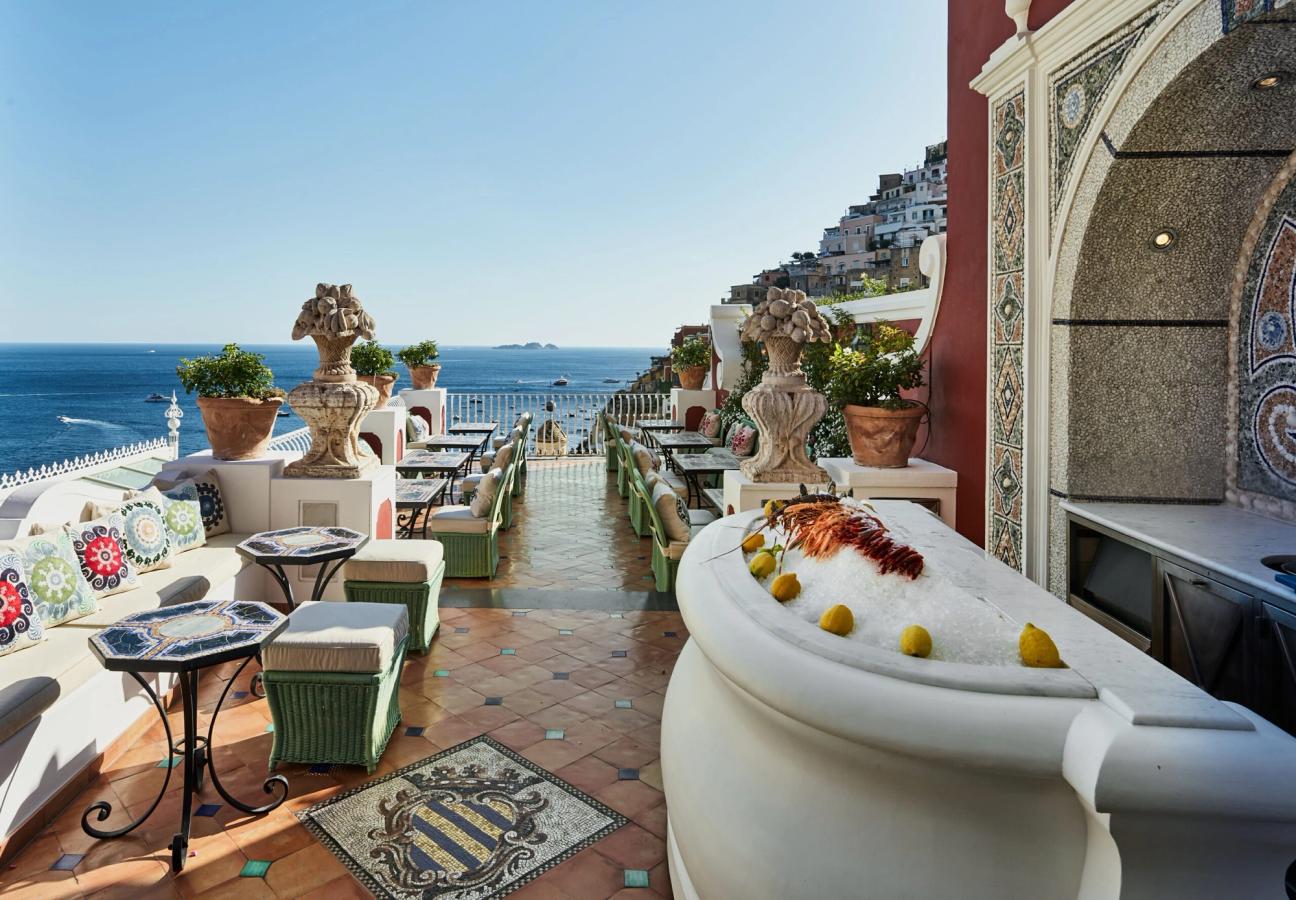
Le Sirenuse has been a family affair since the very beginning. Paolo’s daughter Giulia has long been instrumental in its upkeep, as was his brother, Franco, and since 1993, Antonio (Franco’s son) and his wife Carla. (We may print a family tree next time for sake of ease). Crucially, a certain sea-breeze loucheness has been inherited along with the building. Where other grand hotels hum with taut frisson, like a piano string tuned to within nanometres of its life, Le Sirenuse feels more down-to-earth and gracefully baggy, somehow, like linen trousers.
The service is immaculate, but no-one ever looks like they’re trying too hard — the hospitality industry embodiment, perhaps, of sprezzatura dressing. A great deal of the enduring appeal — and the reason journalists like to describe Le Sirenuse so frequently as ‘seductive’, I think — is that after a few hours here you can half trick yourself into thinking that it remains a private house to this day, and that you yourself are a hand-picked guest invited for a long weekend of elegant mingling with an eclectic cast of poets, painters, professors and plutocrats, perhaps. (This is a clever trick, and a form of good manners — you feel more interesting and handsome just by being there.)
Le Sirenuse has been a family affair since the very beginning...
Francesco Sersale, who, along with his brother Aldo, now helps to tiller the galleon, says that this is the best bit about the place: the people that walk through the door. Where other family hoteliers have historically cashed in to big corporates, you sense that this would never have much interested the Sersales. A blank cheque is fine, but anecdotes and stories and friends are much more the thing.

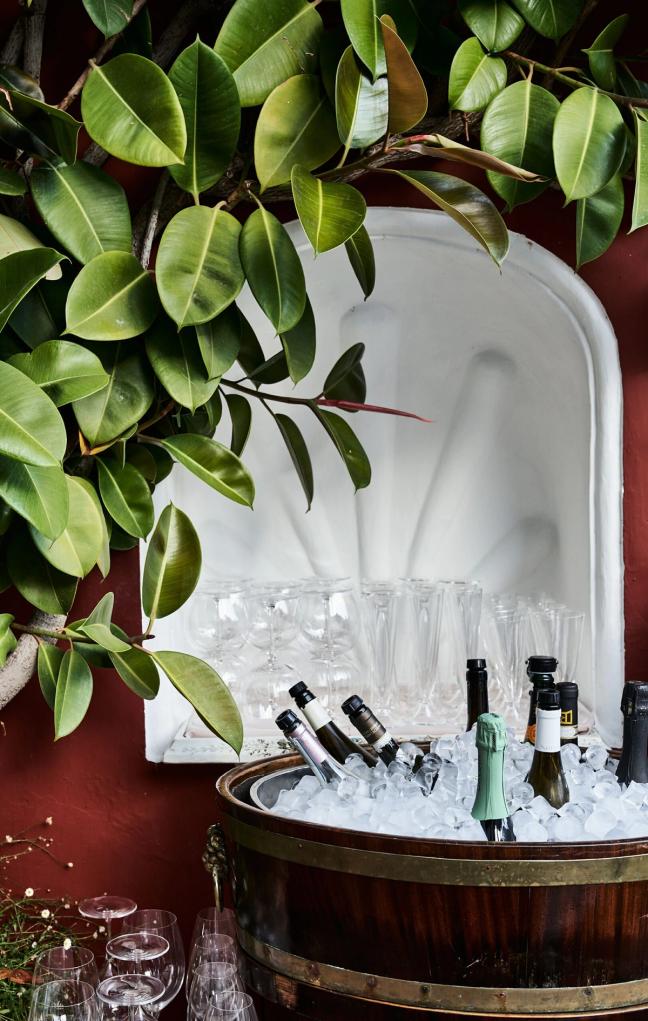
Aldo and Francescoo are both in their late twenties, and each spent their early careers far away from the family concern before returning with quiet purpose to the fold. Francesco was a talent agent in New York, and Aldo studied under the illustrious and ingenious Ecole Hôtelière de Lausanne before stints at the Mandarin Oriental and Sant Ambroeus. As kids, they didn’t quite have the run of the place, in the way you might imagine — children under six are politely disencouraged at Le Sirenuse, of course, and the pair spent a good chunk of their formative years at school in England — and Francesco says, in quiet reverence, that he’s probably only been in the pool once. (But then again, I’ve never done a cannonball in my place of work, either.)
As adults, though, the pair work closely with their father Antonio and mother Carla on every aspect of the hotel, only with the work-life balance of a person who would never use the phrase ‘work-life balance’ — mopeds to Amalfi for breakfast, motorboat jaunts to beach-side restaurants for lunch; international business calls in Lacoste polo shirts, towels slung round the neck. They are charming and charismatic, generous and sincere — English manners and Italian ease. Everyone knows everyone in Positano, and everyone in Positano likes the Sersales.
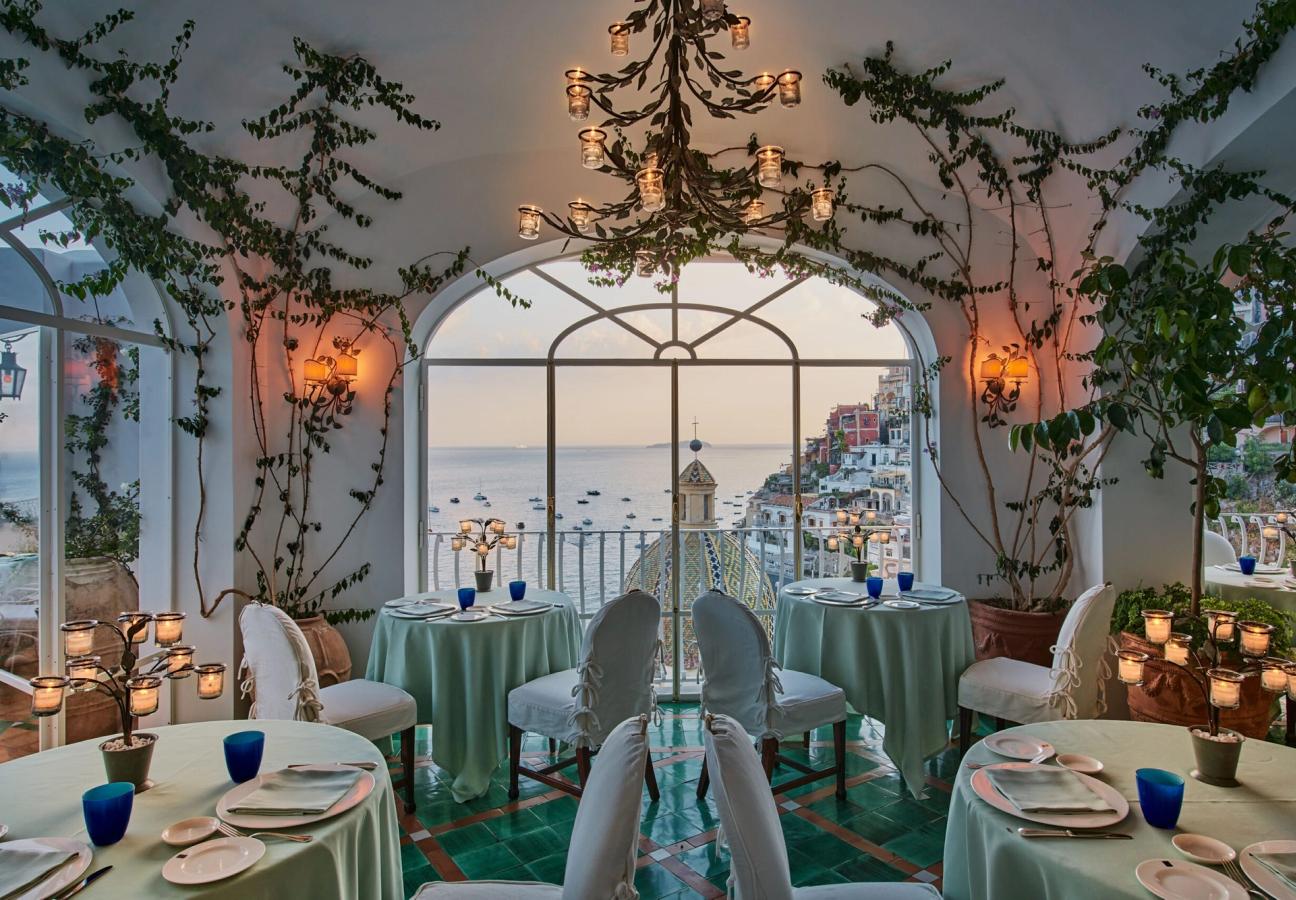
Le Sirenuse has five gardeners and no gardens, because a garden in Positano is like a cricket pitch in Manhattan. Instead, it contents itself with bonsai trees older than some sovereign nations, and palm fronds the size of oars, and a bobbing sea of oleander, frangipani, Amalfi lemon trees and rose bushels, arranged on every horizontal surface. In La Sponda, the glittering pool-side dining room with those famous white, arched ceilings, the mature bougainvilleas are trained up the walls like living sculptures, while outside the creepers and jasmine climb, in some unbroken network of green tendrils, from the foundations of the place up to each little coved balcony and beyond.
As evening descends, a young man trots around the place with a special ladder, lighting candles. There are 4,000 of these in La Sponda alone — the secret to the dining room’s flickering, conspiratorial mood — so perhaps ‘trot’ isn’t quite right. This is a never-ending task on par with the nick man, and equally impossible to bootstrap or fudge. You can get fake candles, I suppose, but only in the way that you can buy cheese in a can, or conjure up powdered eggs — you suspect the Italians would rather jump from the clifftops, thanks very much. Somehow, miraculously, most of the tiny flickering orbs stay alight throughout the evening, despite the gentle swaying and potent strumming of Franco and Andrea, the wisened, serenading pair who have been swilling through this room since 1993. Two guitars and two bow ties and two mustaches, floating in soprano harmony between the gliding waiters. You don’t have to sing along, but you’ll want to. The food is a triumph, of course, with Michelin-starred talent in the kitchen, and a menu you might take home and frame. It would be cruel and unusual to list it all here, but the beef-shoulder fagotellini were the finest morsels of pasta I have ever had in my life. It’s also worth saying that you don’t get to 70 without amassing one hell of a cellar.

Positano is a fine place. All roads, alleys, walkways, and winding paths lead to a beach, and you’re drawn to the navy blue waters by gravity alone. (It’s getting back up, of course, that’s the real skill. I met a large German man, wheezing and bumbagged, on the return leg from the slate-grey bay at Spiaggia Fornillo. “You’re velcome to it!” he huffed near a lobsteted wife.) The best restaurants outside of town are accessible by car, of course, but I’ve never met anyone who doesn’t go by boat. It would be like doing the pilgrimage to Lourdes by chopper — the journey is part of it, and the gods would be displeased. Da Adolpho is one such destination, where the Tripadvisor reviews claim the waiters are pirates as if that’s a bad thing.
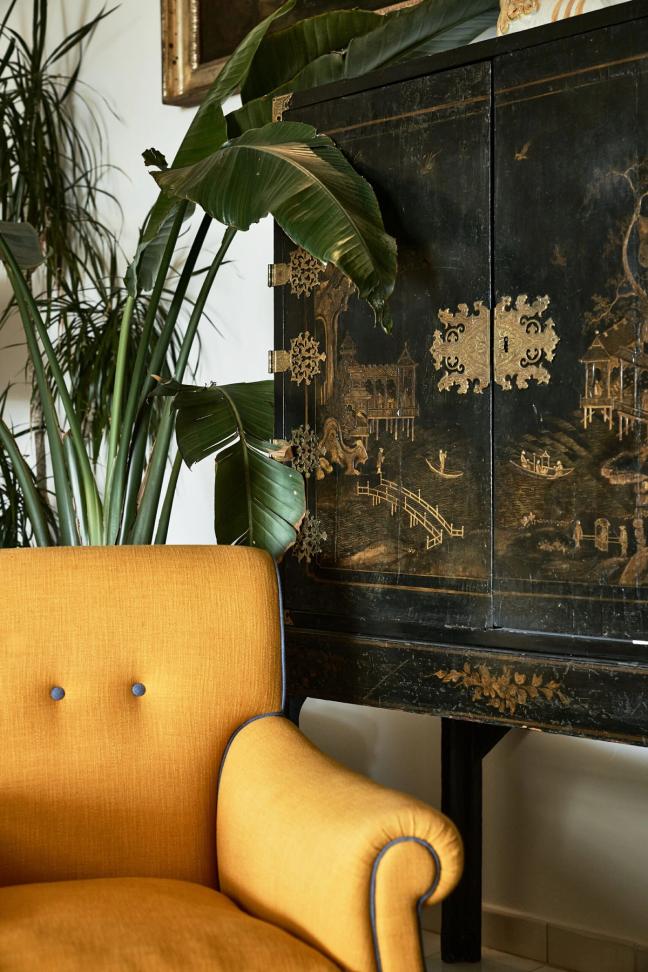


They are friendly, sometimes toothless, effortlessly efficient, and conjure a uniquely raucous atmosphere. They will collect you from a concrete jetty at the far end of the main beach at Positano — one crew member an off-duty Dolce & Gabbana model with vanta-black hair; the other an antique seadog the colour of a decent Burford Brown — and deposit you, a few frothy minutes later, at a rock-hugging shack that has changed little since Steinbeck’s day. Inside, the house white comes on draught, expertly chilled, ever-so-slightly sparkling, and jugged up in porcelain with slices of juicy, fleshy peach. The seafood is zippily fresh and incredible; the mozzarella from the hills above is grilled gooily over lemon leaves; and the pesto pasta — which uses sweet green chillies and walnuts in lieu of basil and pine nuts — is exceptional. They are hospitable and entertaining, and, in my one experience at least, have pleasingly little time for Americans with big heels and small dogs. On the return leg, the boat will appear to sway more than it did on the way there, but that just means you had a good time.
If you took off the captain's Persols, there would be another pair underneath.
The other spot worth mentioning is Lo Scoglio, which sits on a long, cedarwood pier up to the west of Positano, and could have been crafted from the decks of a thousand Rivas. The best way to get there is on Le Sirenuse’s exquisite mid century house boat. Once you’re close enough, the restaurant’s launch shoots out to intercept you, and the driver of this is the first person I’ve ever seen navigate a bustling marina using just his inner thighs and a general insouciance. If you took off his Persols, there would be another pair underneath. When we visited the Lo Scoglio for lunch one gleaming afternoon — fresh sea bream cooked juicily in the oven, while a chubby old blonde labrador wallowed in the sun — Sting was there, apparently, as were a TikTok family you’ve never heard of who have more followers on the platform than anybody else. Neither, you suspect, would recognise the other, and at Lo Scoglio they’re not the point anyway.

Which is all a rather long winded way of saying that there are plenty of places in Positano in which to wile away your time, if you so desire. But the problem you’ll find, I suspect, is this: that as soon as you step away from Le Sirenuse, you have the half-guilty sense that you’d really quite like to return as soon as possible. The views are just better; the sun glows differently on the terraces; the cocktails get you drunk in more compelling ways. Le Sirenuse is a sweet and rare indulgence, but one that isn’t bad for you and never grows sickly — like Ambrosia from heaven, but without all the repentance. The ceramic shops and hilltop pasta joints nearby simply don’t stand a chance — and when you see new guests checking in on the morning you check out, it is a bit like that opening scene in Platoon, where the battle-hardened soldiers pass the fresh faced new recruits, only everyone’s in linen. “Just you wait!”, you want to say. The hotel is named, of course, after the Sirens of mythology, and its celebratory logo for this, its 70th anniversary, shows two shimmering mermaids goading you from under a crescent moon. And the journalistic cliches, I’m reluctant to report, are accurate. Le Sirenuse emits a strange and lovely and addictive call. Steinbeck, bloody Steinbeck, wrote that “Positano bites deep”— that it is “a dreamlike place that isn’t quite real.” The beauty and mystery of Le Sirenuse is that it is.
Read next: The return of the Capri Set: The historic Hotel La Palma re-opens its doors

Become a Gentleman’s Journal Member?
Like the Gentleman’s Journal? Why not join the Clubhouse, a special kind of private club where members receive offers and experiences from hand-picked, premium brands. You will also receive invites to exclusive events, the quarterly print magazine delivered directly to your door and your own membership card.
